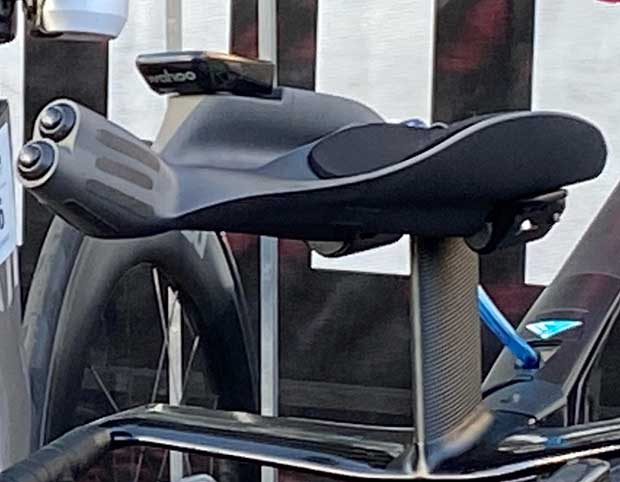Aerobars Used in Kona

When all the pros behave one way, and the rest of us behave another way, that’s how you know a big technical change is coming.
In the spring of 1987 all the pros were swimming in wetsuits and riding on aerobars, but that hadn’t yet filtered down to the rest of the sport. You see the arc of the sport since then: It wasn’t long until all of us were using these two technical advances. This year might not be another 1987 but it’s a year of significant change. As we saw, many or most of the pros in Kona moved away from split nose saddles this year. But the larger change is in aerobars. Here’s the aerobar count among age group athletes.

Just as the #10 most popular saddle in the AG race was the #1 saddle in the pro race, it was the #14 most-used aerobar in the AG race that the pros used more often than any other. The second most popular aerobar among the pros? The aerobar brand that tied for 2nd overall was #15 in the AG count.
Do I think these aerobars will supplant Profile Design, Zipp and Vision among age group use? No. Profile Design and Vision have their own versions of the aerobar style to which the pros have gravitated and they’re hard at work, I’m sure, on yet more bars like this. But these two aerobar brands at the top of the pro count – Drag2Zero and Sync – show where the market is going, in broad strokes.

Below is a shot I took when I was counting bikes and equipment in the pro women’s transition racks. These are the bikes of the 3 women with the lowest start numbers in the race, belonging to Daniela Ryf, Anne Haug and Sky Moench. As you see the aerobars are SwissSide, Speedbar and Aerocoach respectively.

But it’s not just these top Kona qualifiers; here’s a shot below of the bikes in the middle of the women’s pro field. The Aerobars are made by TriRig, Vision, Wattshop and Aerocoach. They’re all some version of full length armrest aerobar. These are the bikes of Pamela Oliveira, Haley Chura, Simone Mitchell and race winner Chelsea Sodaro.

In all, of the 44 bikes in the women’s field whose equipment I could identify at last 30 had aerobars like this. In the men’s field the saturation was higher. In all, more than two-thirds of the pros had bars of this type.
Here’s an interesting stat. Aerobar makers whose products appeared on 1,259 bikes in the amateur race – more than a quarter of the field – had no aerobars on any bikes in the pro racks. Meanwhile a whole slew of aerobar makers appeared on bikes in the pro field but had few if any bars in the age group races – new brands like Revolver, Radsport, Kismet (Matt Bottrill’s brand), SwissSide.

Then there is my favorite new bar in Kona, made by a fellow by the name of Markus Weiss. He 3D printed the bar above, and his brand is called Prints4Watts. These bars were on Laura Zimmermann’s Scott Plasma. I can’t find a website, but here’s his Instagram page and you’ll want to go over and take a look.

Above is Lucy Charles-Barclay’s aerobar on her CUBE. Most of CUBE’s pro riders had bars like this and CUBE makes them all, custom molded to each athlete’s forearm. This is pretty similar to the Speedbar process, which got this whole full length forearm thing going. Speedbar had only one athlete in the race – Anne Haug – which is kind of sad, since everybody’s bar of this sort has been a reaction to what Speedbar originally did. Speedbar did have 14 of its bars in Kona, but that’s a $3,000 bar and an involved process, and I suspect what the market wants is a less custom, more production, easy to buy, size adjustable, value product.
If you look at the one significant difference in the pro positions that you see nowadays – forearm tilt – I believe this new style of bar opens the door to that positional change. Some of these bars have a kind of brace in the back of the armrest on which to rest your weight, so you don't slide off the back when the armrest is positioned as is Lucy's above.







Start the discussion at forum.slowtwitch.com